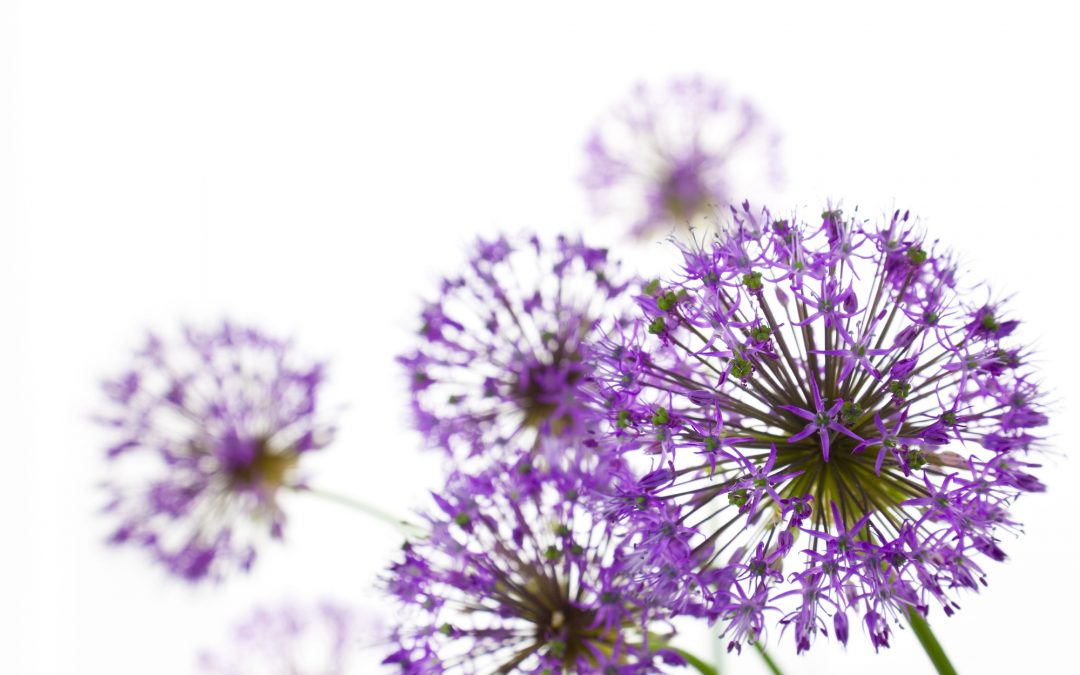We are deeply welcomed when a significant other, such as a parent or partner, shares with us their heart-felt happiness that we are here – that we exist – and are wanted. A welcome can impart love, a sense of belonging and a heart-felt welcome from a friend, or even a stranger, can also touch us deeply. We can receive a welcome from another, and from ourselves.
A loving welcome, especially at our earliest moments in life, helps us to feel that we belong, and are wanted. It’s a confirmation of our existence, and an invitation to feel held in love. We feel seen, acknowledged and connected.
Feeling and being welcomed supports us to land in our body during the foundational period, from preconception to post-birth. Landing in an unwelcoming environment can create embodiment challenges. A safe, relaxed, welcoming environment means that we can focus on growing our resilience for life. As a Soul in the early stages of our embodiment journey we are very vulnerable and sensitive, and especially in need contact, empathy and the loving embrace of welcome. We naturally need connection, inclusion, love and welcome; without it we can feel quite isolated – see my article FOR PROFESSIONALS: Core Isolation in Prenates, Babies, Children & Adults
Connection is inherent in a welcome from a significant other such as a parent, sibling, or grandparent because we feel deeply touched and seen. We need to feel met, held, and welcomed. It’s an acknowledgement of our presence, being, and belonging. A welcome conveys that we are wanted in the presence of another.
Our Soul is conscious, sentient and continually having its own experience
A welcome from our parents, or close others, at the very beginning of life also contains the promise of further love and empathy. Within a conscious welcome there exists the potential for a secure attachment with the one welcoming us. Secure attachment mitigates trauma and challenge and sets us up to thrive: the earlier in our development that we have a secure attachment, the better because we are being parented and feel connected and supported. Secure attachment can happen as early as the preconception phase of parenting.
Imagine how it may feel to arrive at conception feeling a conscious welcome into our new physical environment – our mothers’ Soul-Body, and into the beginnings of our own new body. A welcome in this part of our journey into life can lay solid ground for our sense of the physical world, and what it means to be in a body. When every part of our embodiment journey holds a welcome, we can really land in our body, and be present in our life. A welcome gives a positive imprint for embodiment that invites our full presence and nurtures our resilience, setting us up to thrive. Feeling invited and welcomed into life, family and heart from the very beginning, can profoundly affect:
- how we feel about being here
- our perception of life, family, people and the World
- how we will experience landing in our body
- to what extent we can be present in our body
- our nervous system wiring
- our level of resilience and presence
- intimate relationships
- attachment styles and dynamics
Our sense of home, safety, belonging and welcome is imprinted very early and it is possible to re-pattern those imprints with support, intention and commitment.
An Invitation to Welcome Yourself: A Practice
We unconsciously practice our early imprints every day. Having professional support from a trained pre and perinatal (PPN) therapist to re-pattern and heal foundational imprinting is important, because they are usually relational wounds that require relational healing. A trained professional can identify imprinting, and nurture new internal resources that counteract and resource imprinting – see article Internal Resources and Why We Need Them.
An important part of healing our early imprints is to practice something other than our imprints every day. Part of healing early imprints is to become more aware of when our imprints are activated, and to practice something else in the present that is resourcing. There are many practices we can use daily to live in a resourced, centred, grounded state and stay awake so that we can thrive in the present. These practices work well alongside therapeutic support that reduces the charge in the imprints, and supports us to integrate them.
Preparation for the Welcome Practice:
Check-in with yourself about whether it’s the right time to do this practice. You may choose to do it with a close person with whom you feel safe, someone who can listen to your experience afterwards with empathy and sensitivity. Consider having someone else read out the steps to take you through the practice or record the steps on your phone before you begin.
- Take some quiet, private time and spend a little time with yourself without interruptions, or tech. Create comfort, warmth and safety
- Have some writing or drawing materials available to use when you emerge from your practice
- Settle in and take three deep breaths into your belly through your nose and slowly blow long out-breaths through your mouth
- Ground – feel your sit bones/feet/body on the ground, feel your pelvis and orient to Mother Earth
- Orient to your centre/midline which runs from the top of your head (crown) to your root in the perineum
Let’s begin:
- Tune in to yourself gently for as long as feels right, then when you are ready you can put your hand on your heart, or wherever you are drawn to place it. It’s most important to go slow and listen to yourself.
- Send love into the place where you have placed your hand, for as long as feels good. Go slow.
- When, and if, you feel ready you can say, ‘Welcome’ to yourself. You may say, I am welcome, I welcome all of myself with love, etc. Say it as many times as feels good to you, for as long as you want. Listen to your own wisdom and intuition as you do this practice. Listen to your Soul-Body
- Staying quiet and connected to yourself, allow your response/s to the welcome to arise – feelings, sensations, images, impulses to move, and thoughts are all responses
- Lovingly accept and welcome your response to welcoming yourself, no matter what it is
When you have finished welcoming yourself you might like to make some notes/draw, and/or share your experience with another. Whatever your response was to welcoming yourself, consider it a blessing to hear what welcome means to you in this moment. If there is judgement or negativity arising within, try to be gentle and welcome those parts of yourself too.
If you wish to you can share your experiences and feelings with another, you can also share drawings, etc.
Keep practicing welcoming yourself regularly – if it feels right for you to do so.
You’ve begun an important ‘conversation’ with yourself on a felt-sense (Levine, Peter) and somatic level. You can choose to continue welcoming yourself as much as feels right for you, and please do seek support if challenging feelings arise, or if you feel isolated.
End of the practice.
You are welcome here
We can welcome ourselves in both the larger sense of welcoming our Soul, and in lovingly welcoming the entirety of our humanity. This is a deeper welcome practice that involves empathically welcoming our feelings, triggers, internal resources, and all of our inner young ones and parts. It’s a gentle practice of intentionally welcoming ourselves. To welcome our whole self it helps to be tuned in to our body as much as possible. This increases what we can perceive about how we are, what we’re feeling and what we need. See my article – The Soul-Body for more information about our embodiment journey, self-awareness, consciousness and presence, and deeper listening to ourselves and others.
Welcoming the whole of ourselves has the potential to relieve many conflicting feelings inside, and to soften and heal younger parts that feel anxious, isolated, scared or full of self-judgment. We may need some support to do this kind of healing work, even though we can do a lot of self healing, because it is a relational wound that can require some relational healing.
Many of us have had to find our way into life/embodiment without our core need for welcome and connection being met, and we’ve had to adapt to feeling unwelcome. Ideally, we would all be welcomed before, or at, conception and our welcome would continue throughout the prenatal period as part of conscious early parenting and attachment. In the present moment we can choose to welcome ourselves ‘on purpose’ as often as we wish, using the above ‘Welcome Yourself’ practice. Even when with friends, out walking the dog, or watching a movie we can easily place a hand somewhere on our body and give ourselves a gentle, loving welcome.
Welcoming ourselves can bring up feelings about not having been welcomed. Seeking the support of another/others who can welcome us, and support our feelings, is a good way to receive some healing and re-patterning of those imprints. It’s important to welcome the feelings we may have about how it felt not to be welcomed.
A Birth Welcome
Some of us may have been welcomed at, or after, birth. As babies we’re usually not seen as ‘here’ until we’re on the outside of our mother’s body and visible to the human eye. We have actually been here for almost a year by the time we’re born, and much has happened in that time that will deeply influence our lives. Birth welcomes can be interrupted and disrupted within the medical birthing system.
Parents can welcome their baby wherever they give birth when they know just how important a welcome is at that early stage. Even when we’re unable to hold our baby in our arms at birth, we can extend an energetic and/or verbal welcome to them. Imagine surrounding baby with deep heart-felt love and welcoming energy, even if they are not in the same room with us.
When babies are separated from their mother at birth they often don’t know if, and when, they will see her again because they are not given this important information. We can stay connected to our newborn no matter what and let them know that we are with them in love and empathy and will see them soon. Even though the umbilical cord has been cut, our heart connection has not because a mother’s love is very powerful. We can hold baby in our mind’s eye and heart, stay consciously connected, and let baby know they are so very welcome. Co-parents’ welcomes are much needed, and parents joining together in holding and welcoming their baby is the ideal.
A Healing Welcome Practice for Parents and Children
If, as parents, you didn’t get to welcome your baby back then, you can welcome them now. Visualise your child either as a sweet little prenate or a newborn, and in your mind’s eye give them the welcome that was missing. Using your imagination, see what you wanted it to look and feel like back then, and hold your child (no matter their age now) in your heart as you do so. The welcome may have been welling up in you back then, and something got in the way of delivering it, or you may not have known it was important to give. This is a practice you can do with your children no matter what their age, and there are two options:
- A non-verbal/energetic communication (e.g. when they are asleep, or absent), e.g. visualise the moment/s that you want to heal, and how you would have wanted them to feel. Put as much detail into it as you wish and take as long as you need. Repeat over time.
- A face-to-face verbal conversation with them now such as, “I’m remembering when you were inside me/conceived/born (you choose) and if I could go back to that time, I would want to have ….” you fill in the blanks. This can be done in a relaxed or casual way, e.g. whilst playing with or reading to your child – during quiet times of connection when your child is feeling receptive and your heart is soft.
In your own words share your feelings and what you had wanted to give back then. Both of these practices, either non-verbal or direct, can affect your child positively in the present. This welcome may also bring up feelings in your child about the absence of welcome earlier, slow down and listen, it’s all part of the healing.
Belonging, Welcome and Early Imprints
When we are welcomed coming into life, we can have a sense of belonging because we feel held, included and acknowledged by another person. We matter, we exist, and we belong when another extends their loving heart in welcome to us. The welcome says, “I claim you in love”, “You belong with me in this family”. When we are welcomed, we don’t have to fight for our place, wonder if we are welcome, or feel disconnected, unloved or isolated.
A welcome can happen in one significant moment and have a big effect, and there is also a continual need in us to be seen, heard, embraced, acknowledged and included – to be loved and to belong. We can offer welcoming to ourselves daily, and it can also be very beneficial to feel welcomed by others.

A Healing Exercise: Asking for a Welcome from Another
There may be people in our lives with whom we feel safe, and that we can ask for a welcome. If you feel drawn to asking for a welcome allow yourself first to imagine:
- What would asking your chosen welcomer look like?
- How you want your conscious welcome to feel?
- What would create safety throughout the experience?
Let your imagination and your heart show you what kind of welcome you need. This will help you to get to know yourself more deeply, discover what you need in a welcome, and to get clearer about what you need from the person welcoming you. As you explore this in your imagination first, it gives you some space and time to discover whether you’re ready to receive a welcome from another yet. Take your time. You can check-in with yourself again later to see if you are ready; trust your responses and don’t push over fears or resistance – welcome them!
If you are ready to go ahead, you can share your needs with your welcomer:
Take your time communicating what you would like from your welcomer. Be explicit and remember that you can change how it’s happening once it begins. Choice and going slow are important. Keep communication open. Your welcomer needs to be sincere, loving and empathic. You may want to talk with them about how the experience is during, or afterwards – or not at all.
End exercise
Recognising Welcomes That Are Already Here
There may be welcomes in our lives that we’re not recognising. Our own early imprints about feeling unwelcome may be telling us that welcome doesn’t exist, or that we can’t have it. When we’re ready and able to open to the possibility that welcomes are already here, we can make an intention to begin to perceive them – just a little at a time. Begin slowly and stay in touch with how it feels just to have an intention to perceive the possibility that there may be welcomes here already. There is no need to change or do anything differently externally; simply notice welcomes and see how it feels.
When we discover the existence of something that we were previously unable to perceive, we learn that our early imprinting deeply influences our perceptions in life. It’s best to be gentle with ourselves and to go slow when our perception is expanding. In this way we can stay in touch with how it’s affecting us to open our perception a little wider and deeper and take good care of ourselves as we do so. Starting slow and building capacity for new perceptions can help us to reach the point of receiving welcomes. When we add something new, either that we are giving welcome to ourselves, having an intention to perceive welcomes, or receiving or perceiving it from another, it’s good to stay in touch with our felt-sense and the feedback our body is giving us about these wonderful new experiences.
Listening, slowing down, and self-care are all important elements in how we can welcome ourselves. We can receive the welcome, then slow down to receive the response we are having to the welcome. E.g. if we have not felt welcomed before we may have some feelings about what we did not receive back then, as well as feeling the joy of a welcome.
All feelings and all parts of us need to be welcomed; the practice of welcoming ourselves continues daily when we can welcome all of our parts and our responses. We can make room for everything that we are without judgement and seek support if needed.
Welcome
Waking the Tiger and Somatic Experiencing, Peter Levine of Somatic Experiencing


